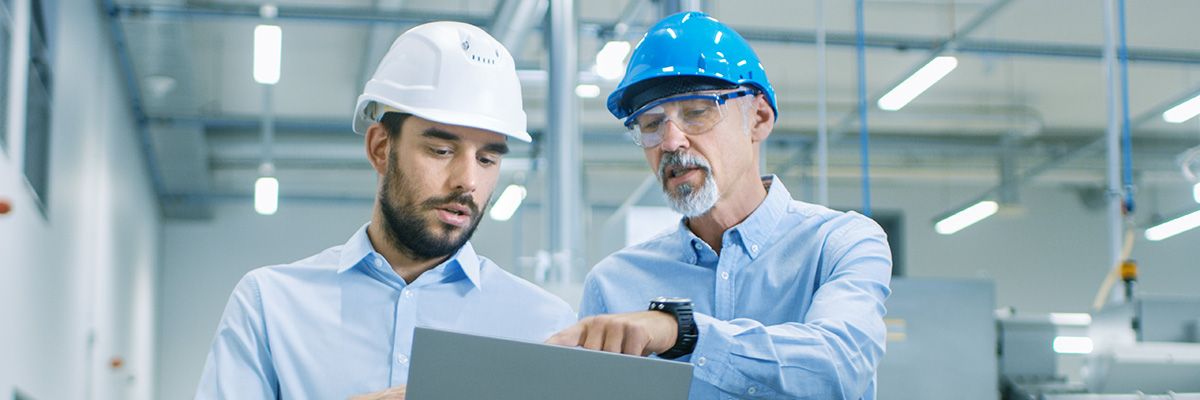
The value of CO2 monitoring
In any commercial or industrial facility, air quality is essential, and assuring the required standard is maintained is among the facility manager’s key responsibilities.
Air quality is integral to providing occupants with a healthy, safe, and productive environment. Elevated CO2 levels work against this goal, so continued awareness of CO2 measurements is important.
It’s known that the performance of individuals in facilities with elevated CO2 concentrations can be affected – lethargy and drowsiness are known side effects - so this isn’t an issue the facility manager can afford to ignore. As we’ll see, knowing CO2 levels also helps reassure ventilation systems are correctly calibrated, indoor pollutants are diluted, energy is saved, and building performance is maximized.
Determining air quality
Air quality is primarily determined by the concentrations of various contaminants present, principally gases and particles (CO2 foremost among them), in the air inside the building. To mitigate the presence of contaminants, fresh air is brought into the building through the ventilation system to dilute them.
Because the presence of pollutants isn’t constant, indoor air quality must be continuously monitored if the necessary remedial steps are to be taken. CO2 levels are generally taken to be the primary indicator of Indoor Air Quality (IAQ) because while, in general, gases and particles in indoor areas can be difficult to measure accurately, that’s not the case with CO2. CO2 is easy to measure, and its presence can serve as a proxy for the presence of other contaminants allowing it to serve as a general and useful indicator of overall IAQ.
What’s the right CO2 level?
Every time we exhale, our breath contains up to 50,000 parts per million of CO2, which, while outdoors, doesn’t present a problem. It is an issue indoors in a working space. Because it accumulates in indoor environments, generally, indoor air will have CO2 levels roughly one hundred times higher than its outdoor equivalent.
By measuring the exact concentration of CO2 indoors, the facilities manager can quickly determine whether a building’s air exchange balance is optimal, or whether the correct amount of outdoor air is entering and circulating in the building to rebalance CO2 levels.
This rebalancing isn’t guesswork, and exactly how much CO2 is problematic can be accurately assessed. There are various guidelines available for this purpose, for instance the American Society of Heating Refrigerating, and Air Conditioning Engineers (ASHRAE), recommends that indoor CO2 levels not exceed the local outdoor concentration by more than about 650 ppm.
Measuring CO2
CO2 is monitored and measured using a meter, a simple and inexpensive piece of equipment that determines CO2 levels in specific areas of a facility. Meters are generally sufficiently accurate to identify where ventilation is adequate and where it’s not. Some work by measuring only CO2, while others track humidity and a range of additional gases. Most record and show the data they collect internally; some are coupled with external trackers to produce readouts.
For useful conclusions to be drawn from CO2 readings, the building must be occupied for long enough to be in a steady state, where CO2 levels are in balance with the ventilation rate. For instance, an occupied building with a very low ventilation rate would likely never be in balance; CO2 levels would increase throughout a given period. In contrast, a building with a high ventilation rate might show an artificially low CO2 level. Without a steady state reading, CO2 measurements might be accurate at a moment in time but won’t tell us much about optimal ventilation rates.
This brings us to an important point: the challenge with CO2 monitoring isn’t primarily collecting the data, which, as the above suggests, is straightforward using a monitor, but rather interpreting its meaning. That’s where expertise is required, and the facilities manager may need external, expert help.
CO2 monitoring and HVAC
CO2 values are also crucial in the context of HVAC as they enable HVAC systems to automatically manage the volume of outdoor air required to maintain appropriate CO2 levels and to meet pre-set targets in this area within the facility. This strategy is what we know as Demand Controlled Ventilation (DCV), particularly effective for facilities where the ventilation rate changes automatically in response to changes in the occupancy density. DCV systems augmented with CO2 control sensors can save around a quarter of HVAC energy usage.
Summarizing the benefits
Summarizing the benefits of CO2 monitoring, the key points to remember are:
- Determine if the facility is adequately ventilated – confirm correct levels of outdoor air are being introduced and ventilation systems are correctly calibrated.
- Dilute CO2 levels and other indoor air pollutants – providing a healthy and productive working environment.
- Save energy and optimize HVAC performance by heating or cooling only the optimal amounts of outdoor air required.
The NexRev advantage
When it comes to the effective management of a facility in general and CO2 monitoring specifically, NexRev can help. At NexRev, we’ve been unlocking the power of facility and energy management data with over half a million connected devices across North America.
Our team of experts is focused on helping you deliver more with your budgets, infrastructure, and assets to create sustainable savings in operations and energy, reducing your risk and increasing operational confidence.